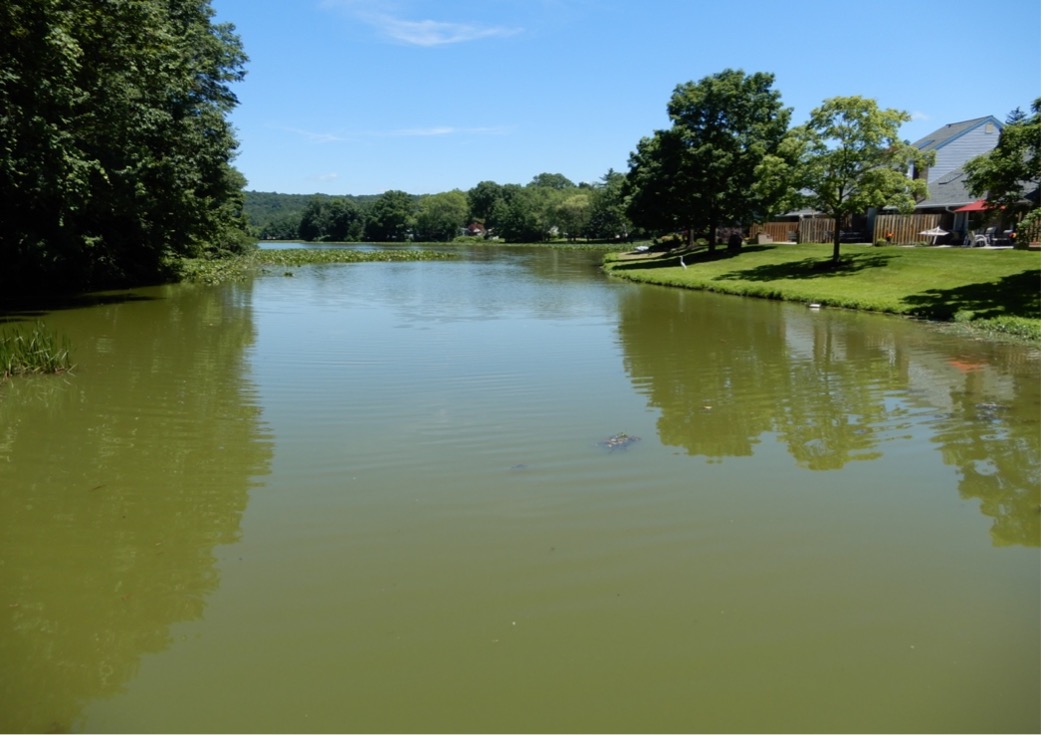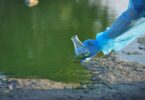Health Impact of HABS
This is the third and last article in the series on Harmful Algal Blooms developed by GlobalWaterWorks.org and published by H2O Global News.
It is estimated that 30 to 40 million Americans get their drinking water from lakes and reservoirs that could be periodically HAB-contaminated water. Boiling the water does not solve the problem, it may even exacerbate it.
HABs’ primary cause is hypoxia, caused by decomposing sediments and recycling of nutrients from these sediments. This leaves these lakes vulnerable for developing cyanobacteria HABs, which can produce potent toxins.
There are multiple classes of cyanotoxins each of these toxins have different health impacts.
-
- Neurotoxins can cause neurological damage.
- Peptide hepatotoxins cause serious damage to the liver.
- Dermatotoxins cause skin irritations and respiratory issues https://www.nrdc.org/stories/freshwater-harmful-algal-blooms-101
Animals, particularly dogs that play in the water can be dead within 15 minutes if they lick their fur after it has become covered in cyanobacteria. This is why they are particularly vulnerable.
Recent studies have shown the extent to which cyanotoxins in the water can be aerosolized into the air and breathed in by people around the affected water. https://calusawaterkeeper.org/news/collaborative-research-on-airborne-toxins-from-harmful-algal-blooms-in-southwest-florida-224878/ This is raising a new level of concern about the effect of HABs on humans, since rather than being exposed briefly when swimming, this is a more chronic consistent type of exposure to the toxins.
According to the Michigan Department of Environment, Great Lakes & Energy; EGLE, here are the Frequently Asked Questions on Harmful Algae Blooms. https://www.michigan.gov/egle/-/media/Project/Websites/egle/Documents/Programs/WRD/SWAS/HAB/HAB-FAQ.pdf?rev=77d8be9e26f547c28e9634c57b82a2fb&hash=CBC5D1D7B8D5DEFDA89E0F28D30465F1
Summary for the FAQ:
- You cannot tell if an algae bloom is toxic by looking at it, so just stay away from them.
- Skin contact with HABs can have several negative outcomes.
- Irritation, such as rashes
- Hives
- Skin blisters
- Runny eyes and nose or asthma-like symptoms
- Swallowing water having cyanotoxins, which may occur while swimming in a lake infested with HABs may cause:
- Stomach pain
- Diarrhoea
- Vomiting
- Weakness
- Numbness
- Headaches
- Dizziness
- Difficulty breathing
- Large amounts can harm the liver and kidneys.
- The spray from recreational water sports can cause airborne cyanobacteria, which can cause several different negative health effects.
- If your pets, especially your dogs, are exposed to HABs be sure and thoroughly rinse them.
- If your dog drinks water which has HABs, it could have very serious health issues for the pet.
- Do not wade, swim, or even touch the water suspected of being HABs infested. This makes it obvious to keep children away from the water and the shoreline.
Most drinking water utility plants have processes that can remove toxins when they are at low levels during the water filtering and purifying process. However, if HABs occur, most treatment processes cannot cope with the higher toxin levels and “do not use the water” notices have to be issued, as has been the case in Florida, Ohio, Oregon and other states in recent years.
Harmful Algal Blooms are a serious issue. Up until recently, there have not been any true cures for remediating them. Many states still permit the application of algicides to mitigate the blooms, but this only makes the matter worse as it ends up releasing toxins from the dead cells, creating a larger and more serious issue.
The very good news is there is a solution. In May of 2022 at the International Conference on Toxic Cyanobacteria and then again in September at the Michigan Inland Lakes Conference, the world’s recognized expert in the field, Wayne Carmichael, discussed a solution to the prevention of HABs and remediation of affected water bodies, which he endorses. https://connect.globalwaterworks.org/posts/26909995?utm_source=manual His endorsement comes after 6 years of studying the process and the results from it. This treatment has been available for over ten years. It combines oxygenation (not aeration) and biological treatments to remediate HABs and restore the quality and health of source waters.
The Government Accountability Office issued a report in June 2022 that recommended that government agencies at the federal, state, and local levels urgently adopt such prevention and remediation strategies.
Hopefully, GlobalWaterWorks.org, Wayne Carmichael and the GAO message will all be heard to start along the road to eliminating the constant threat of dangerous toxins in the water that we use for drinking, irrigating and for recreation.







